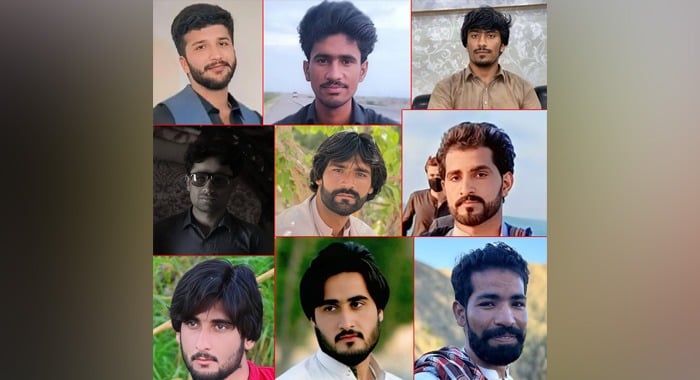In a major breakthrough, Pakistani law enforcement and intelligence agencies have uncovered and dismantled an extensive Indian-Backed terror network operating in Balochistan. The cell, allegedly backed by India’s notorious intelligence agency RAW, was actively aiding the banned separatist group Balochistan Liberation Army (BLA) with logistics, surveillance, communication, and propaganda.
Nine operatives were arrested during a series of intelligence-based raids, exposing what officials are calling a “multi-layered, tech-enabled proxy network” designed to sabotage peace and development in the region, particularly the CPEC corridor.
The Network: Who Was Involved
Authorities have revealed detailed profiles of the arrested suspects, indicating they were not low-level operatives but part of a highly organised transnational network:
-
Abid Hussain, from Killi Dato, Mastung, served as the logistics financier for the network. A satellite phone (SIM: +881…) and a USB drive containing detailed CPEC route maps were recovered from his possession.
-
Abdul Razzaq, from Killi Manglabad, Quetta, operated as a signal runner. He was found with a flash drive containing 27 encrypted audio clips suspected to contain BLA communication logs.
-
Muhammad Ishaq, also from Quetta, conducted motorbike reconnaissance for suspicious activity and was found in possession of offline VR Google Map files.
-
Abdul Majeed, from Gazgi, Khuzdar, was the key social media propaganda handler. His digital devices held records of BLA-linked fake social media accounts and media content.
-
Jaind s/o Liaqat, from Bagh Meri, Kech, served as a chat modulator and was found with the complete source code of “Project Natraj”, a digital operations toolkit allegedly developed under RAW’s direction.
-
Safiullah s/o Ghulam Nabi, from Kadkocha, Mastung, operated a covert house-financing channel. His financial records included a $38,000 crypto transaction via a Dubai-based FZE wallet, flagged for terror funding.
-
Gohar Bakhsh, from Kalanch, Pasni, worked as a drone operator for coastal surveillance. His drone captured high-resolution video feeds of sensitive port areas.
-
Zakariya Ismail, from Karachi, was arrested for his direct involvement in the Khuzdar school bus suicide attack, which was traced to this broader network.
The Tech Trail: A War of Signals, Codes, and Crypto
A total of 312 satellite phone calls were logged via Thales-manufactured Thuraya sets using +881-series numbers. At least 47 calls were traced to a RAW field operative in Rajasthan, code-named “Durga Shankar”, who is believed to be directing BLA logistics from across the border.
One intercepted call revealed direct orders for a coordinated triple VBIED (Vehicle-Borne IED) attack on the Gwadar-Karachi CPEC caravan planned for Pakistan’s Independence Day, August 14, 2025.
A decrypted RAW document, titled RAW-BH/OP Code-984, detailed the “Natraj Strategy,” which involved creating satellite relay cells along Balochistan’s coastal belt and Afghan border, with young students fronting these hubs to manipulate human rights narratives in case of arrests.
The Financial Monitoring Unit (FMU) traced crypto funds originating from a Dubai-registered company Saffron Rise Pvt. Ltd., routed through small business accounts in Kadkocha and Mastung. The funds were then withdrawn in cash and smuggled into Afghanistan via non-banking channels. Safiullah was identified as the key money pusher, and a printout of a suspicious wallet listed in GCC FIU Joint Circular 04/24 was recovered from his home.
Digital Propaganda Front: From Hashtags to Fake Heroes
Following the decryption of the Hanuman Proxy Tool, cyber investigators uncovered that Abdul Majeed had authored and managed over 400 coordinated fake tweets, aimed at reshaping global perception of terror incidents as human rights activism.
These efforts, security analysts say, are part of a well-orchestrated hybrid warfare campaign, using digital misinformation, crypto-financing, and remote logistics to wage asymmetric war against Pakistan.
How the Network Was Cracked
This counter-operation was no accident. It was the result of months-long surveillance, signal monitoring, and AI-based cyber analytics. The breakthrough came when Wiretap 17-B/25 picked up a coded message disguised as a motorcycle registration number, later decoded as a command key.
Additionally, drone feed analytics linked a DJI Mavic drone operated by Gohar Bakhsh to specific flight paths over sensitive coastal infrastructure, confirming reconnaissance efforts.
What This Means for National Security
This exposé highlights that Balochistan is not merely facing local dissent but is targeted by a foreign-sponsored digital and logistical invasion, aimed at destabilizing Pakistan’s strategic and economic assets.
The use of satellite phones, crypto wallets, drone surveillance, and social media propaganda illustrates the evolving nature of terrorism — one that combines old-school subversion with modern technology.
Yet, the successful unearthing of this network shows that Pakistan’s security apparatus is not only alert but highly capable on ground and in cyberspace.
This was not just a victory in the field — it was a victory in the invisible war of networks, signals, and narratives. While enemies may plot from afar, Pakistan’s guardians have proven that no digital disguise, encrypted command, or cross-border transaction can escape their watchful eyes.





